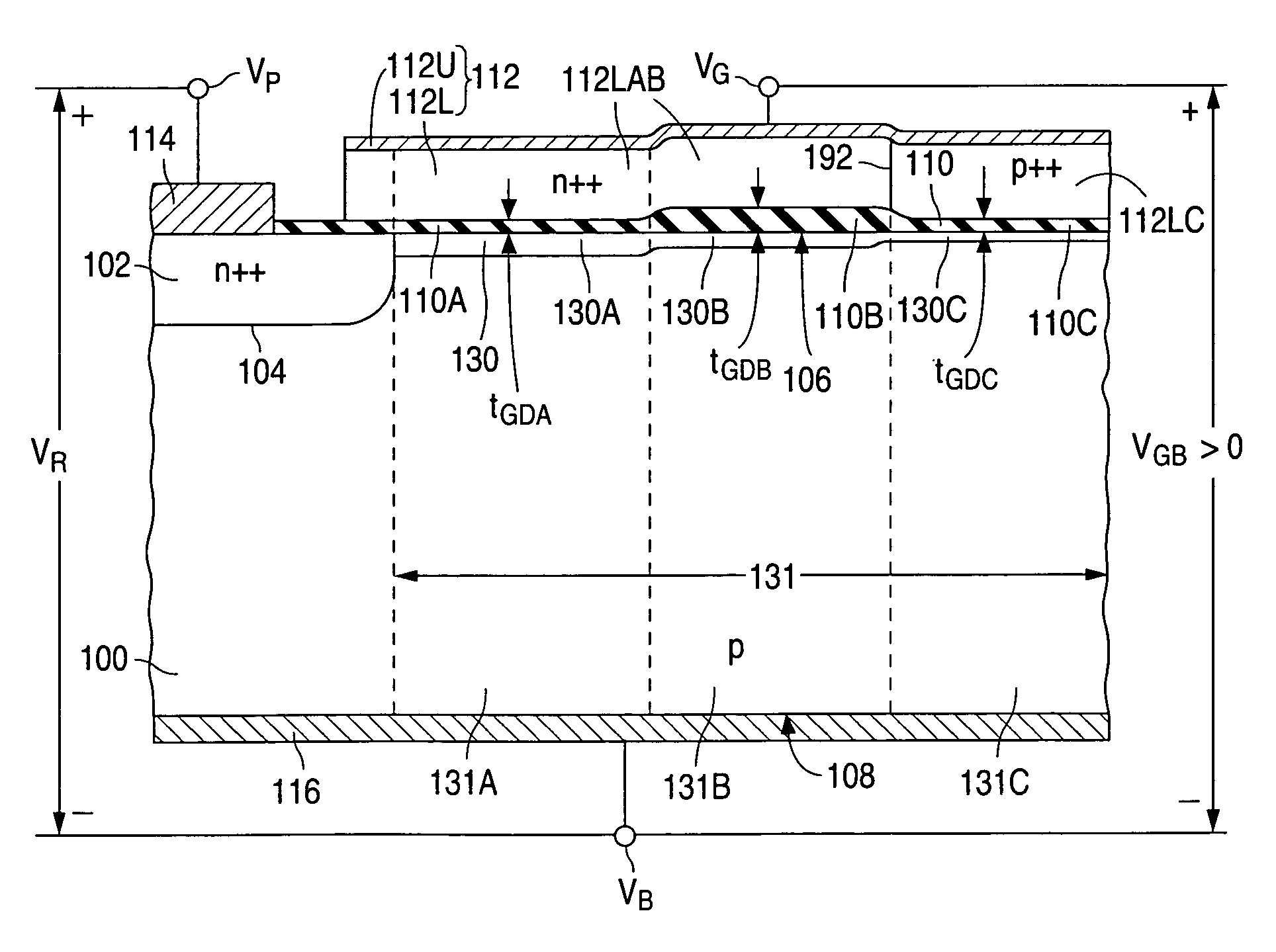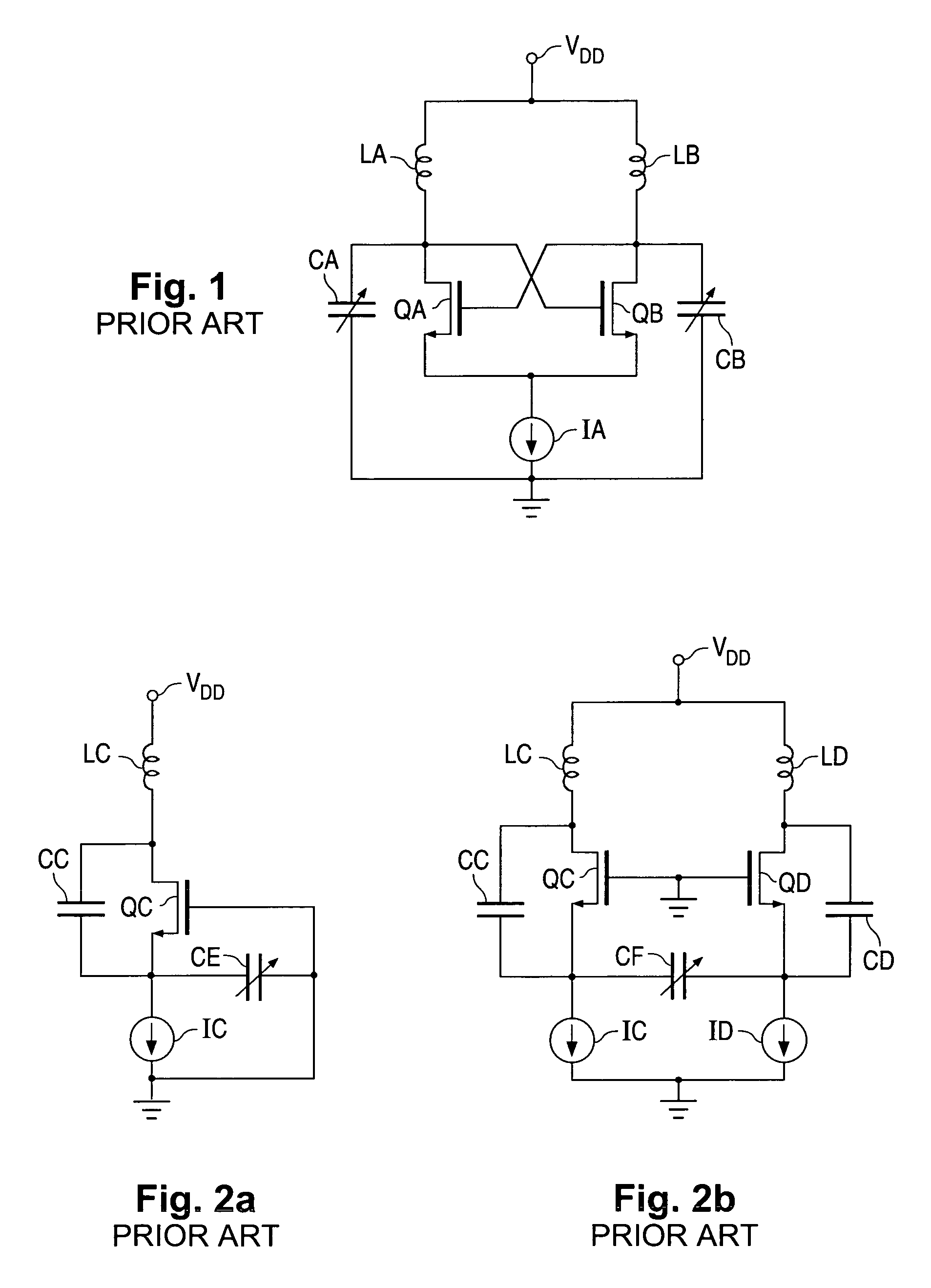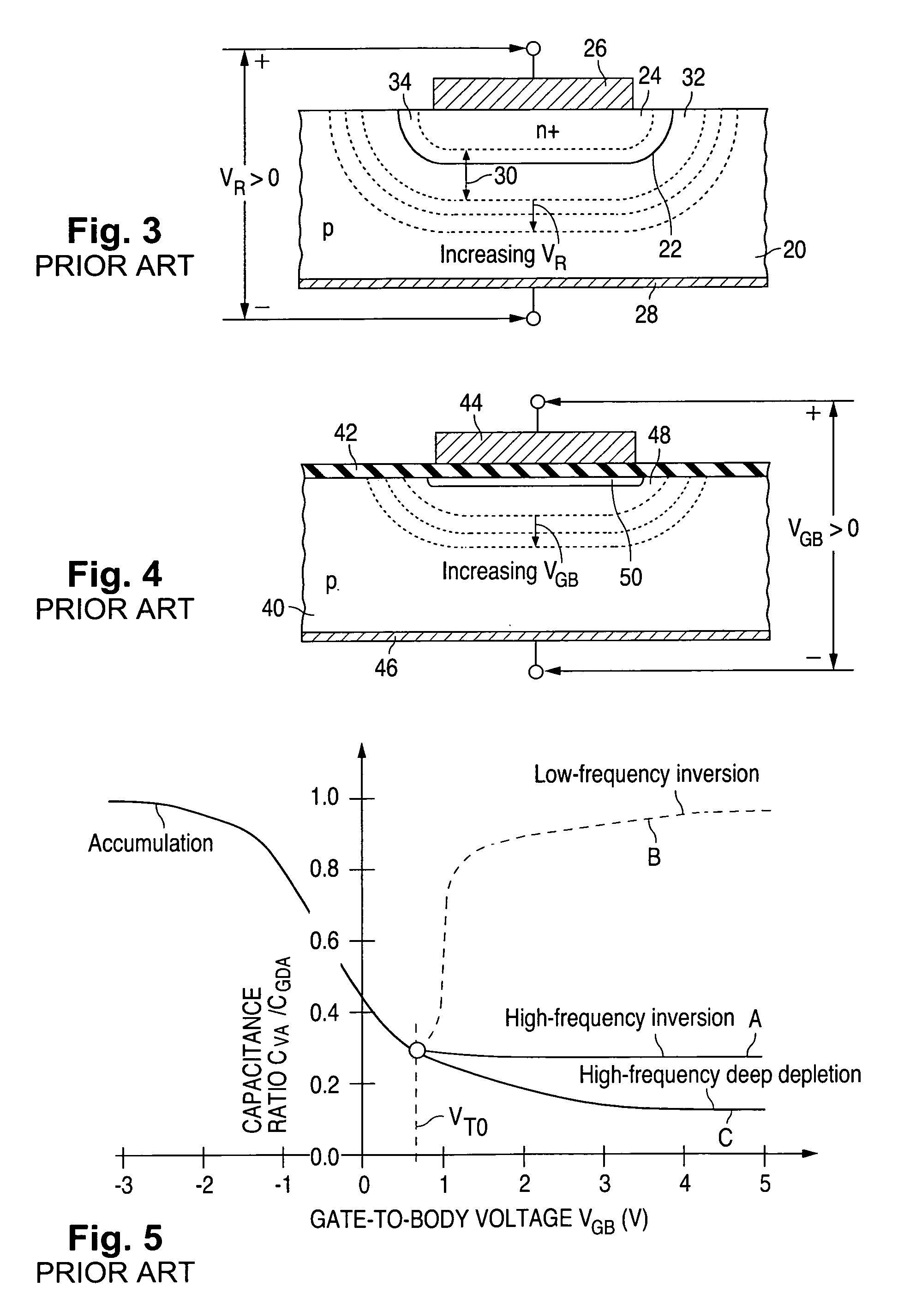Gate-enhanced junction varactor with gradual capacitance variation
a varactor and capacitance variation technology, applied in the field of varactors, can solve the problems of complex process for manufacturing components of integrated circuits, complicated process, etc., and achieve the effect of facilitating the control of varactor capacitance and high maximum-to-minimum varactor capacitance ratio
- Summary
- Abstract
- Description
- Claims
- Application Information
AI Technical Summary
Benefits of technology
Problems solved by technology
Method used
Image
Examples
Embodiment Construction
General Considerations
[0083]The term “n-channel” as used here in describing a gate-enhanced junction varactor means that the varactor has a surface charge-inversion layer (or channel) in which the charge carriers are electrons. The term “p-channel” as used here in describing a gate-enhanced junction varactor similarly means that the varactor has a surface charge-inversion layer (or channel) in which the charge carriers are holes.
[0084]An electrical signal, such as a voltage (or electrical potential), generally consists of a direct-current (“DC”) signal and / or an AC signal which varies with time at a frequency that may itself vary with time. The DC signal may vary with time. Any time variation of the DC signal is either not at a significant identifiable frequency or is at a frequency much lower than that of the AC signal. A bias signal, such as a bias voltage, is a DC signal employed to place parts of an electronic circuit, including a single circuit element, in a specified bias (e.g...
PUM
 Login to View More
Login to View More Abstract
Description
Claims
Application Information
 Login to View More
Login to View More - R&D
- Intellectual Property
- Life Sciences
- Materials
- Tech Scout
- Unparalleled Data Quality
- Higher Quality Content
- 60% Fewer Hallucinations
Browse by: Latest US Patents, China's latest patents, Technical Efficacy Thesaurus, Application Domain, Technology Topic, Popular Technical Reports.
© 2025 PatSnap. All rights reserved.Legal|Privacy policy|Modern Slavery Act Transparency Statement|Sitemap|About US| Contact US: help@patsnap.com



